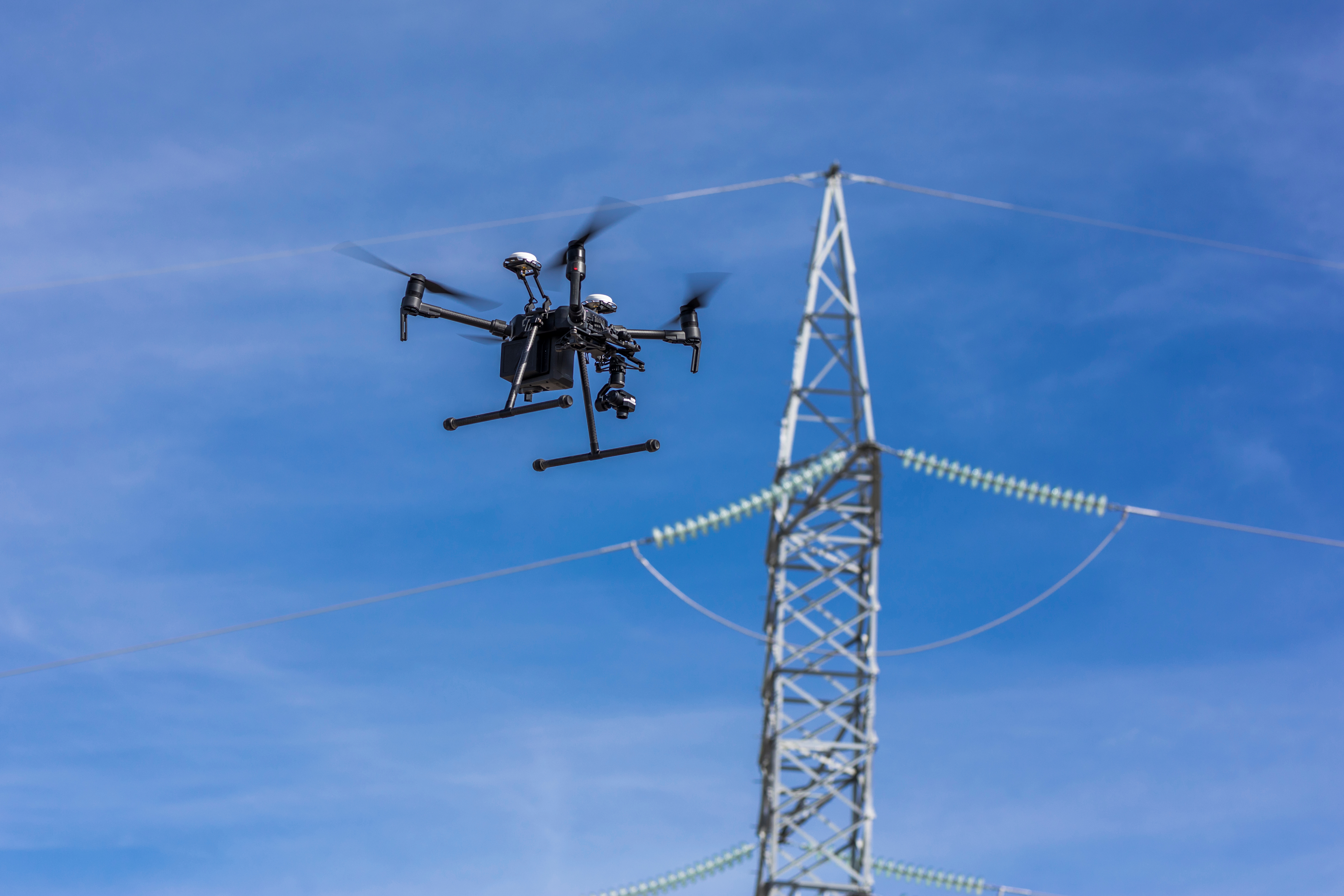At a glance
- Innovative new policy launched by the UK Civil Aviation Authority to help unlock drones flying beyond visual line of sight.
- New rules will help industries inspecting infrastructure such as power lines, wind turbines and site security.
- It follows publication of the regulator’s roadmap to enabling regular and routine drone operations across society by 2027.
Drones will be deployed for long distance inspection of infrastructure such as power lines, wind turbines as well as site security following new rule changes published today by the UK’s aviation regulator.

The UK Civil Aviation Authority will now enable drones to fly beyond the visual line of sight (BVLOS) of remote pilots in so-called ‘atypical’ operations through its new policy for atypical air environments (AAE), marking a significant milestone for the future of drone operations.
While some drones have been flying beyond visual line of sight in the UK for several years, these flights are primarily trials under strict restrictions.
The regulator’s new rules will unlock opportunities for innovators. This includes activities where drones can remain at low heights close to infrastructure or near buildings where there is little or no potential for any other aircraft to be operating:
- Inspecting power lines for damage quickly and at relatively low cost.
- Maintenance checks of wind turbines, significantly reducing the resources needed to manage and repair green energy infrastructure.
- ‘Flying guard dogs’ with drones used for site security.
Sophie O’Sullivan, Director of Future of Flight at the UK Civil Aviation Authority, said:
“As the potential for drone applications continues to expand, our new policy paves the way for new ways drones will improve everyday life.
“It not only enhances the operational capabilities of drones, but also promises widespread societal benefits across different sectors.
“Our commitment is to protect people and enable aerospace, and we will continue to work with industry to maintain high safety standards as commercial drones become increasingly commonplace.”
It follows the regulator’s recent publication of its roadmap setting out how beyond visual line of sight operations will be enabled safely for all aviation users and protecting people and property on the ground.
An atypical air environment can be considered as a volume of airspace where operators can reasonably anticipate there to be a reduced number of conventionally piloted aircraft due to the proximity of ground infrastructure.
The regulator will initially work with several operators to test and evaluate the policy in a safe and scalable way, demonstrating the regulator’s commitment to safely enabling innovative technologies.
sees.ai is one such company, who are working with National Grid Electricity Transmission (NGET) to help maintain, upgrade, and expand its network in England and Wales, which includes around 21,000 pylons and 7000km of overhead cable.
John McKenna, CEO of sees.ai, said:
"This new policy paves the way for sees.ai and National Grid Electricity Transmission to conduct aerial inspection, survey, and rapid response work from a central control room. This ground-breaking innovation will help National Grid fulfil its commitment to providing clean, fair, and affordable energy to its customers, while undertaking the immense task of enabling the energy transition.
“AAE is a big step towards routine BVLOS operations in public airspace. We applaud the UK Civil Aviation Authority for recognising this opportunity and diligently shaping this policy - despite the UK’s airspace being amongst the busiest in the world.
“This pioneering initiative will undoubtedly draw the attention of regulators, operators and customers worldwide, setting a precedent for future developments in this exciting field.”
Kathryn Fairhurst, Overhead Line Operations Director at National Grid said:
“We’re delighted that our work with sees.ai has helped the UK Civil Aviation Authority to develop this groundbreaking policy further.
“AAE is significant progress on the way to deploying these technologies at scale, ensuring that they complement our existing tools and processes. BVLOS inspection and surveying will help us continue to manage our assets safely and securely, at the same time as enabling the transition to a clean, fair and affordable network of the future.”
The work supports the regulator’s ongoing development of policy and regulations so that drone flights can be fully integrated with other airspace users.
Notes to editors:
- sees.ai is a leading, Boeing-backed innovator in autonomous aerial systems. Its technology allows organisations to remotely operate fleets of drones from a central control room, enabling them to monitor, maintain and upgrade critical infrastructure at national scale with unprecedented efficiency, safety, and insight.
- National Grid sits at the heart of Britain’s energy system. The individual companies in the group run the networks and infrastructure that connect millions of people to the electricity they use every day. Read more about National Grid and sees.ai’s work together on National Grid's website.
News from UK Civil Aviation Authority
- Experts appointed by regulator to strengthen economic regulation and support growth
- UK Civil Aviation Authority and Ministry of Defence join forces to build pathway into civil aviation for military personnel
- Regulator’s accessibility assistance report highlights progress made by most UK airports but finds three airports need improvement

